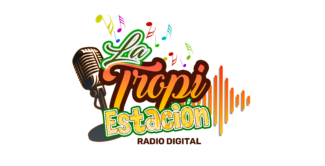Understanding Digital Radio Technology
Digital radio technology represents a significant evolution from traditional analog radio broadcasting, fundamentally altering the way audio content is transmitted and received. Unlike analog radio, which conveys signals in continuous waveforms susceptible to interference and degradation, digital radio transmits audio as discrete data. This shift enables a host of enhanced functionalities, improving both sound quality and user experience.
At the heart of digital radio is Digital Audio Broadcasting (DAB), which employs sophisticated compression techniques to optimize sound clarity while minimizing bandwidth usage. Compression allows for multiple audio channels to occupy the same frequency, resulting in increased channel diversity. This enhances listener choice, enabling access to a wider array of programming and specialized content. DAB utilizes a process known as multiplexing, wherein several digital signals are combined and transmitted together, making efficient use of the available radio spectrum.
Digital radio is characterized by various standards adopted worldwide, notably DAB+, HD Radio, and Internet Radio. DAB+ is an enhanced version of DAB, incorporating improved audio encoding to deliver superior sound quality. It uses the AAC format, providing listeners with clearer broadcasts even in challenging reception environments. HD Radio, primarily used in the United States, enables AM and FM stations to transmit additional channels alongside existing programs, enriching the listening experience through various content offerings. Internet Radio diverges from traditional frequencies by delivering content via the internet, allowing access to global stations, thus removing the constraints of geographical limitations.
Overall, digital radio technology not only boosts audio fidelity but also empowers listeners with a more diverse selection of channels. By integrating these advancements, digital radio solidifies its place as a transformative force in the audio experience.
The Impact of Digital Radio on the Listening Experience
The advent of digital radio has significantly transformed the audio experience for audiences and reshaped the audio entertainment landscape. One of the most notable changes is the improvement in accessibility; listeners can now access a wide range of content from around the globe with the mere touch of a button. The introduction of digital radio services has led to an array of options, allowing users to select from various channels catering to diverse interests, thereby enhancing the listening experience.
Moreover, features such as the ability to pause, rewind, and record live broadcasts have revolutionized how audiences consume radio content. Listeners are no longer confined to a linear schedule, but instead can enjoy their favorite programs at their convenience. This flexibility caters to modern lifestyles, where multitasking and on-demand consumption are paramount. Additionally, the proliferation of niche channels enables audiences to explore specific genres or topics that align with their preferences, which was often scarce in traditional radio formats.
The integration of digital radio with smartphones and smart speakers has further elevated the user experience. Consumers can now listen to their preferred channels through various devices, meaning radio is no longer restricted to traditional platforms. This seamless connectivity has enhanced engagement, allowing for more personalized interactions with audio content. The rise of podcasting within the digital radio domain has also contributed to a diversification of available content. Listeners can dive into an array of topics through on-demand episodes, offering yet another layer of choice.
Emerging trends, such as personalized content and interactive features, are paving the way for a more engaging audio environment. Listeners are increasingly seeking tailored experiences that resonate with their individual tastes. As digital radio continues to evolve, it is clear that the listening experience will become more dynamic, interactive, and attuned to the needs of the audience.
